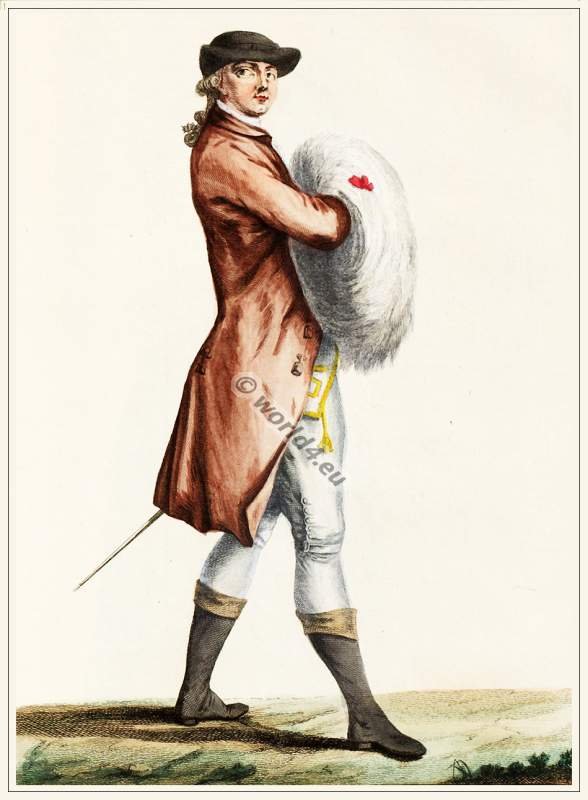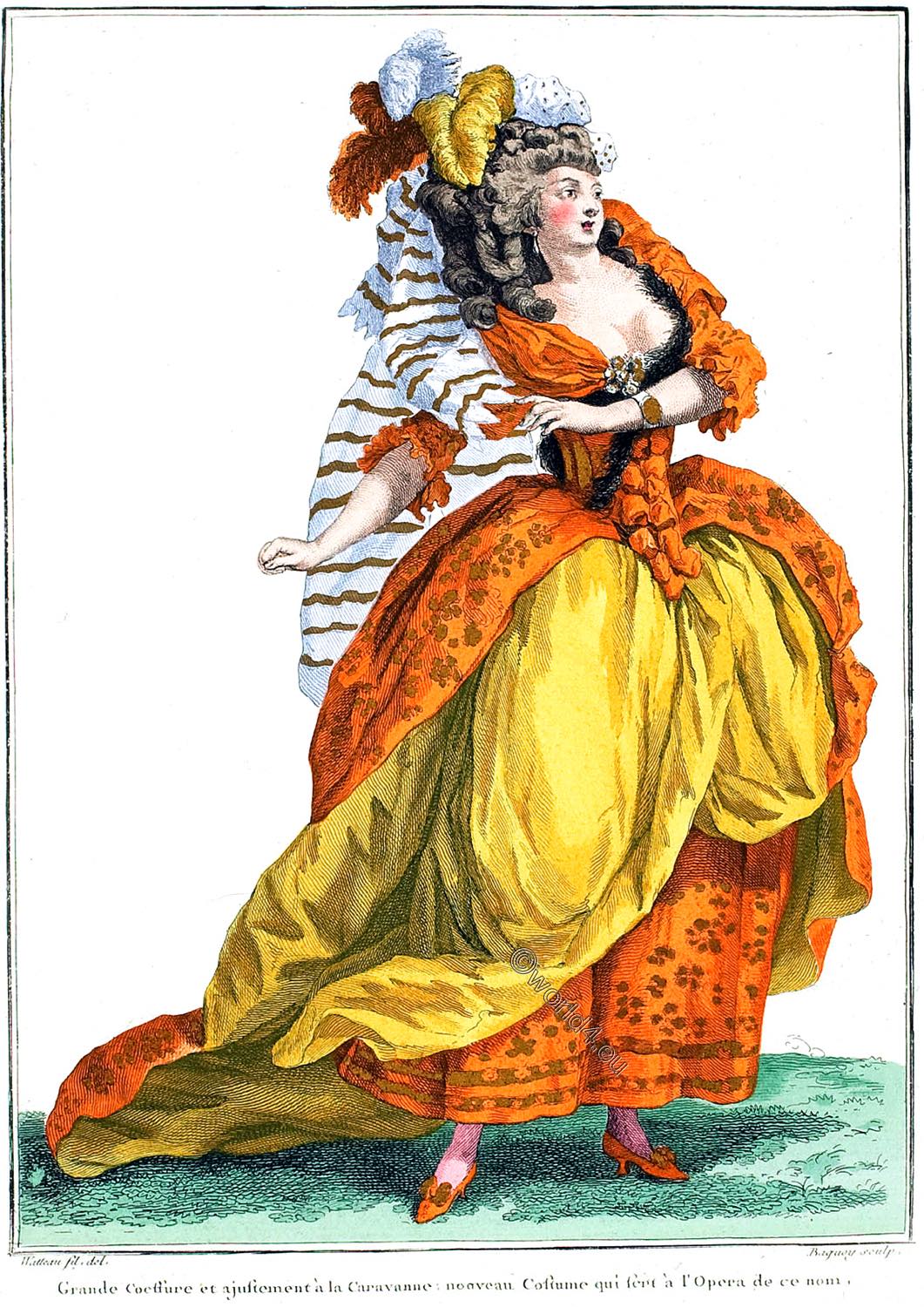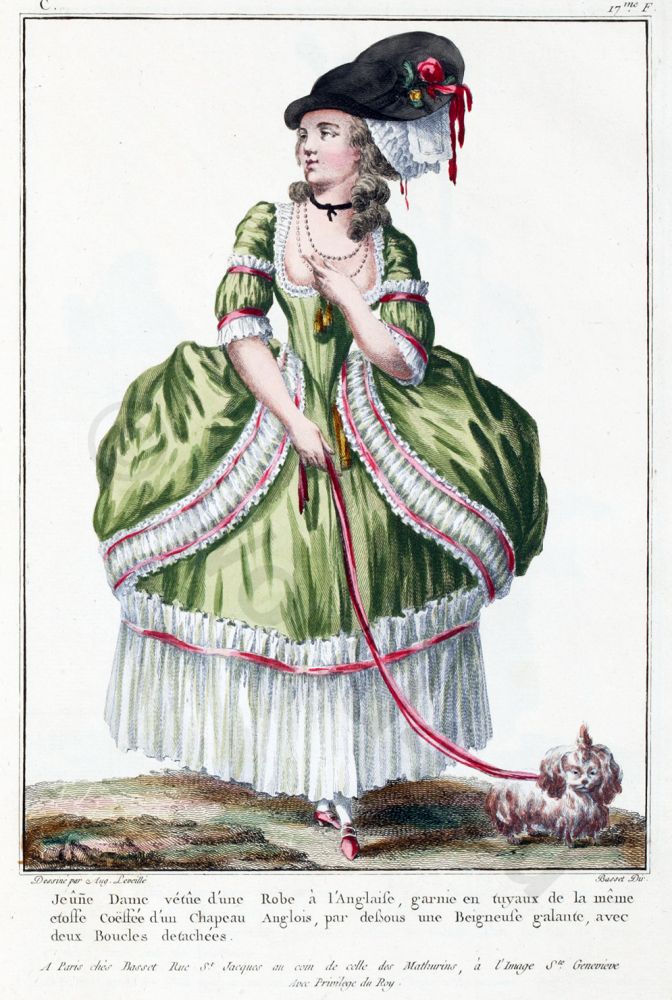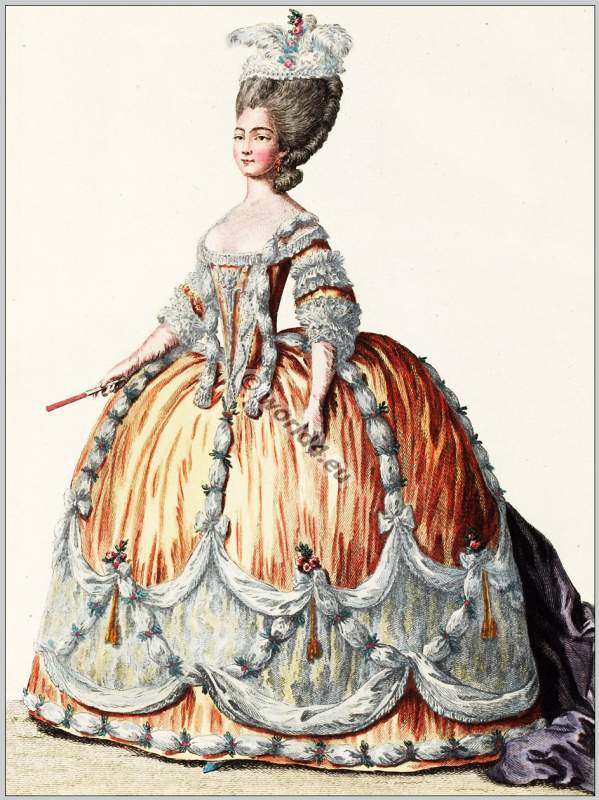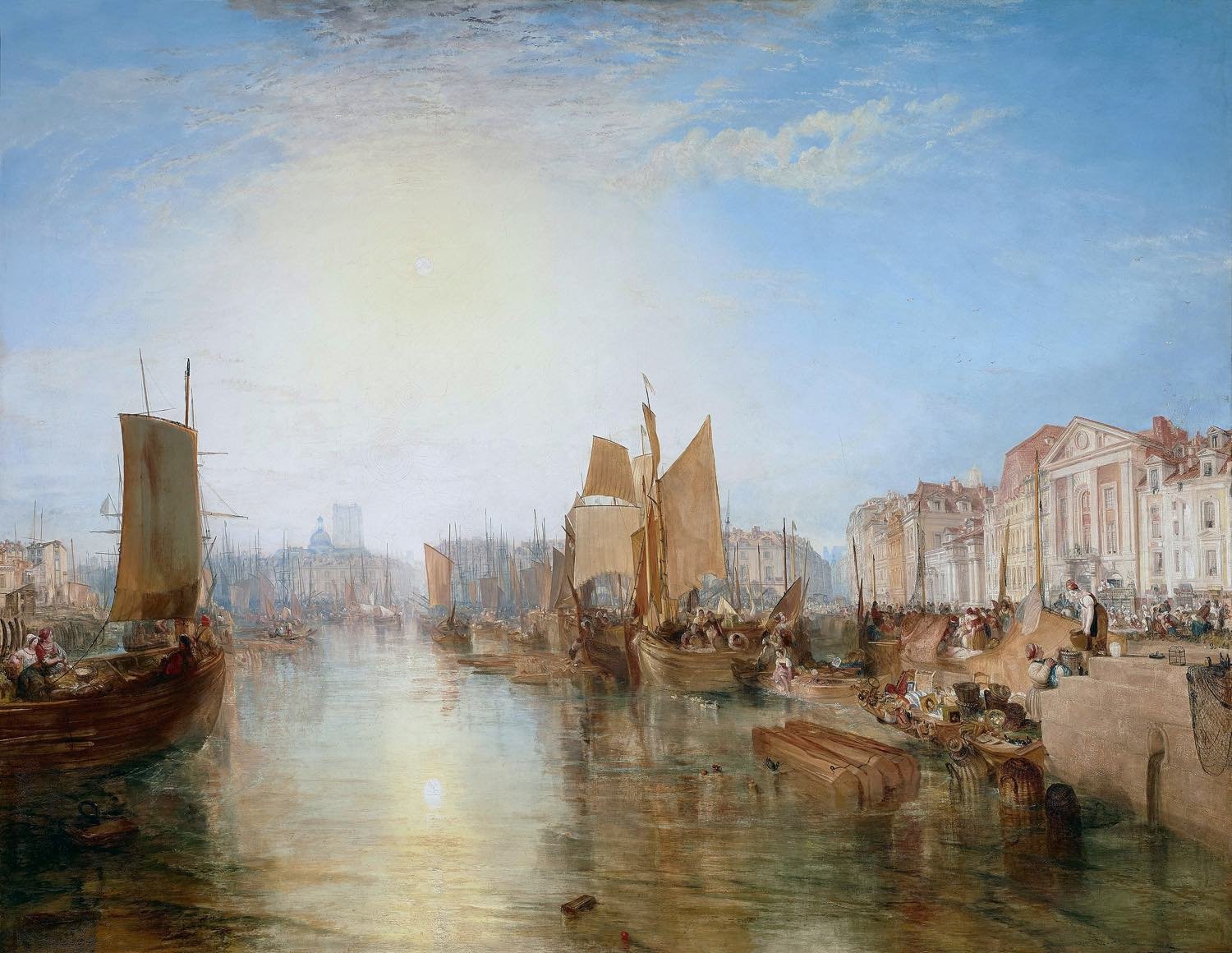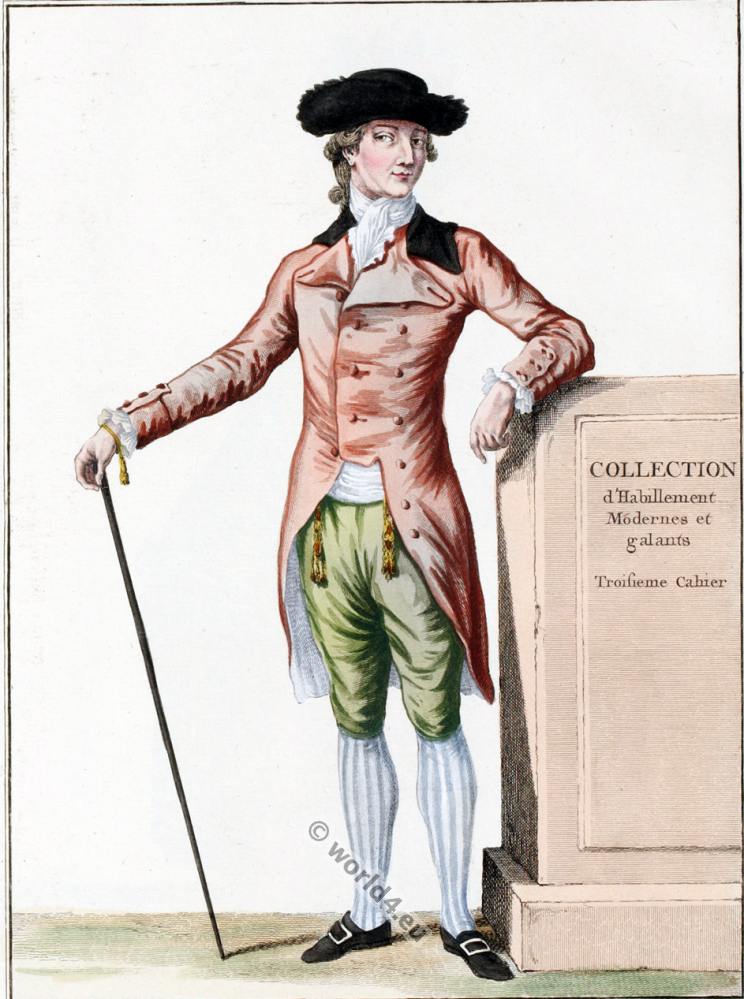Frac a la Polonoise. Suit in Polish style 1780.
Petit Maître vêtu d’un Frac a la Polonoise, garnie de glands en Or. Coiffure d’un chapeau à la Jokeis, ou Jacquet.
A young man dressed in a Frac a la Polonoise, decorated with gold tassels. Headgear in the Jokeis or Jacquet style.
Collection d’habillements modernes et galants avec les habillements des princes et seigneurs. Paris 1780. Dessiné par Claude-Louis Desrais; Gravé par Martial Deny; Carl de Vinck. Éditeur et marchand, André Basset.

Related
Discover more from World4 Costume Culture History
Subscribe to get the latest posts sent to your email.

